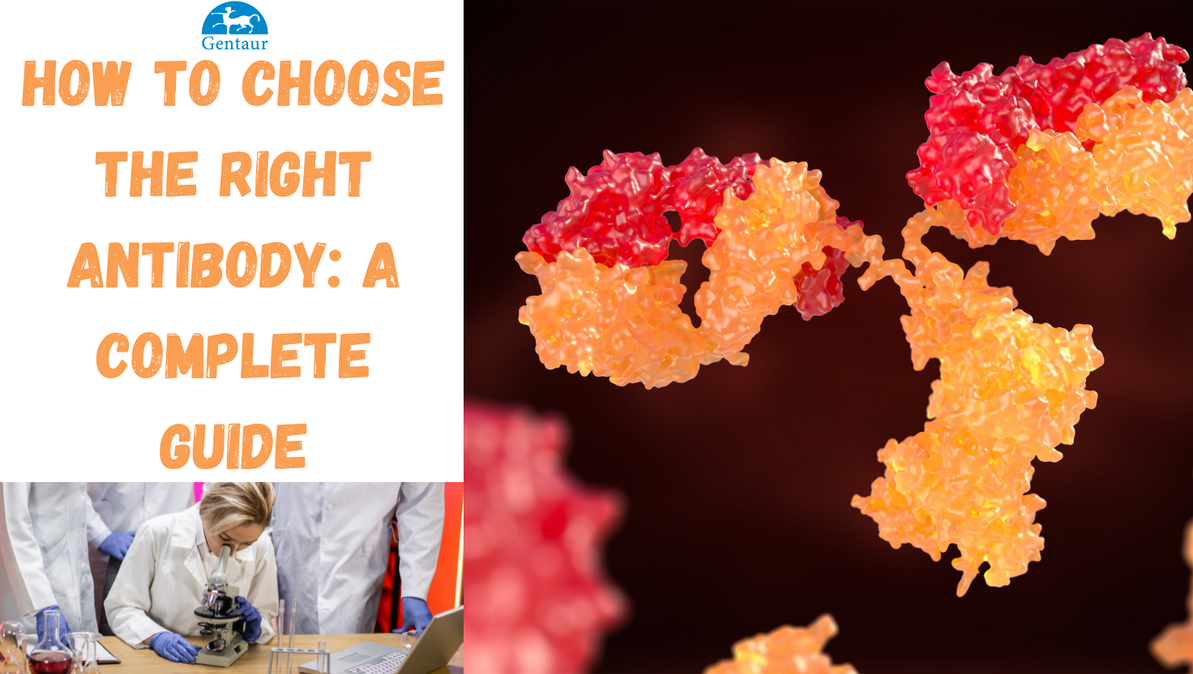How to Choose the Right Antibody: A Complete Guide
Selecting the appropriate antibody is a critical step in any immunological or biological experiment. Whether you’re working on Western blots, ELISA, or flow cytometry, antibody selection can make or break your results. This guide will walk you through the key factors in choosing antibodies, ensuring you find the right antibody for your specific needs.
1. Define Your Application
The first step in antibody selection is identifying your experimental application. Different techniques require distinct antibody characteristics:
- Western blot antibodies: Prioritize high antibody specificity and antibody sensitivity to detect low-abundance proteins.
- ELISA antibody selection: Opt for antibodies with strong antibody affinity and minimal background noise.
- Flow cytometry antibodies: Choose conjugated antibodies with bright fluorescence and low antibody cross-reactivity.
2. Monoclonal vs. Polyclonal: Which Is Right for You?
A key decision in choosing antibodies is whether to use monoclonal vs. polyclonal antibodies:
- Monoclonal antibodies: Derived from a single B-cell clone, they offer high antibody specificity and consistency, making them ideal for detecting a single epitope. They’re a top choice for diagnostic assays and flow cytometry antibodies.
- Polyclonal antibodies: Produced from multiple B-cell clones, they recognize multiple epitopes, boosting antibody sensitivity. They’re excellent for Western blot antibodies or when amplifying weak signals.
PubMed Reference: PMID: 15953833
3. Check Antibody Specificity and Cross-Reactivity
Antibody specificity determines how precisely an antibody binds to its target without interacting with unrelated proteins. Poor specificity leads to antibody cross-reactivity, where the antibody binds off-target molecules, skewing results. To ensure the right antibody, review datasheets for validation data and test results in your species or system.
PubMed Reference: PMID: 20359301
4. Evaluate Antibody Affinity
Antibody affinity measures how strongly an antibody binds its target. High-affinity antibodies are crucial for applications like ELISA, where strong binding enhances signal detection. For low-abundance targets, prioritize antibodies with both high antibody affinity and antibody sensitivity.
PubMed Reference: PMID: 19204779
5. Consider Antibody Validation
Always opt for antibodies with robust antibody validation. Manufacturers should provide evidence of performance in relevant applications (e.g., Western blot, ELISA). Look for validation data showing the antibody detects the correct molecular weight, produces clean bands, or works in your species of interest.
PubMed Reference: PMID: 27595404
6. Host Species and Antibody Isotype
The antibody host species (e.g., mouse, rabbit, goat) and antibody isotype (e.g., IgG, IgM) matter, especially when pairing primary antibody choice with a secondary antibody selection. For example, a rabbit monoclonal primary antibody pairs well with an anti-rabbit secondary antibody. Avoid host species overlap to prevent antibody cross-reactivity.
7. Antibody Conjugation and Detection
For some applications, like flow cytometry, antibody conjugation to fluorophores or enzymes is essential. Conjugated antibodies save time but require careful selection based on your equipment (e.g., laser wavelengths). Ensure the conjugate doesn’t compromise antibody specificity.
PubMed Reference: PMID: 15286731
8. Antibody Concentration and Purity
The antibody concentration and antibody purity affect performance. Highly purified antibodies reduce non-specific binding, while the right concentration ensures optimal signal strength without wasting resources. Titrate your antibody to find the sweet spot for your assay.
PubMed Reference: PMID: 25993940
9. Secondary Antibody Selection
Your secondary antibody selection amplifies the signal from your primary antibody. Choose a secondary antibody that matches the host species and antibody isotype of your primary antibody. For example, an anti-mouse IgG secondary antibody works with a mouse monoclonal primary.
10. Practical Tips for Choosing the Right Antibody
- Read reviews and citations: Peer feedback can highlight reliable antibodies.
- Request samples: Test before committing to a large purchase.
- Consult experts: Manufacturers or colleagues can guide tricky choices.
=> Choosing the right antibody involves balancing antibody specificity, antibody affinity, and application-specific needs. Whether you’re selecting primary antibody choice for Western blots or flow cytometry antibodies, understanding factors like monoclonal vs. polyclonal, antibody validation, and antibody conjugation ensures success. Armed with this guide and supported by scientific literature, you’re ready to achieve robust, reproducible results in your research.
Recent Posts
-
Nicholas E. Navin’s Keynote on Breast Cancer at SCSOmics 2025 (with Lieven in Attendance)
At SCSOmics 2025, held earlier this year, Nicholas E. Navin, PhD, delivered a keynote address that d …17th Sep 2025 -
Reflections on Our Experience at the Vatican Longevity Summit
On March 24, 2025, the Vatican opened its doors to a remarkable gathering of scientists, ethicists, …25th Mar 2025 -
Gentaur : The Leading Distributor of Applied Biological Materials (ABM) in Belgium and Europe
Driving Scientific Innovation with ABM's Cutting-Edge Products Gentaur has long been the trusted dis …19th Mar 2025




